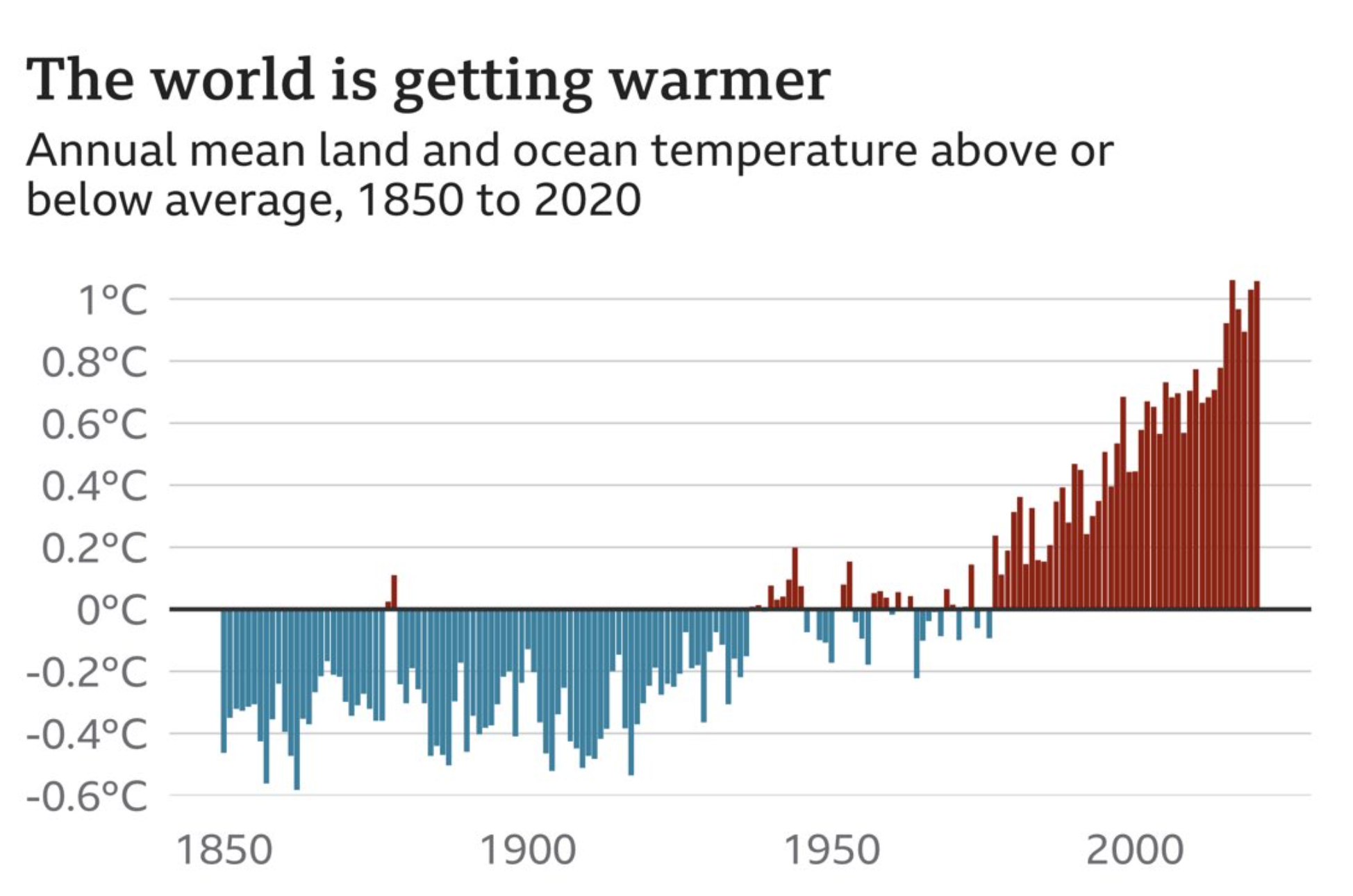
Climate Change
Global emissions of greenhouse gases from human activities are responsible for approximately 1.1°C of global warming since 1850, and over the next 20 years, global temperature is expected to reach or exceed 1.5°C of warming
Climate Change is happening...

What is Climate Change?
Source: University of California Berk
Climate can be defined as the regular pattern of weather conditions in a particular place. A shift in this pattern, in any direction, is known as Climate Change.
What’s Causing This?
Over the course of time, there have been natural fluctuations in the earth’s climate. The difference with the climate change we are seeing now is the fact it is at least partially caused by human activity (if not fully).
This is due to our reliance on fossil fuels to heat our homes, power our factories, fuel our cars, etc. These fossil fuels, when burnt become greenhouse gases. These gases trap heat from the Sun & subsequently heat the earth’s surface.
Carbon dioxide (CO2) in the atmosphere is now reaching levels 50% higher than when humanity began large-scale burning of fossil fuels during the industrial revolution. The earth is also 1.2C warmer than it was in the 19th Century.
What Impacts Will We See?
The most recent report from The Intergovernmental Panel on Climate Change (IPCC) lays out the stark reality we are facing and the effect climate change is having across the globe.
According to the report, the world faces unavoidable multiple climate hazards over the next two decades with global warming of 1.5C. It also states that up to 3.6 billion people are highly vulnerable to climate change, largely from extreme heat, heavy rainfall, drought, and fire. They also had dire warnings regarding food & water security for many nations, warning that there will be pressure on food production and access, especially in vulnerable regions, undermining food security and nutrition.
However, it also warns that some damage has already been done & is irreversible, stating there has already been:
“Substantial damages and increasingly irreversible losses, in terrestrial, freshwater and coastal and open ocean marine ecosystems”.
Some examples of this damage include;
The Great Barrier Reef in Australia, losing half of its corals since 1995 due to warmer seas driven by climate change.
Wildfires becoming more & more frequent
A sixth mass extinction, which if the current rate, will wipe out most species by 2200
Only recently, it was revealed that extreme heat events are happening at both of Earth’s poles at the same time, with the remotest weather station on Earth (Concordia) in Antarctica, recording temperatures more than 40C warmer than average.
It is clear that ambitious accelerated action to adapt to climate change is required now, to avoid mounting loss of life, biodiversity, and infrastructure. This must also be coupled with rapid and deep cuts in greenhouse gas emissions if we have any chance of avoiding these desperate consequences.
Source: National Interagency Fire Center
Source: Lijing Cheng et al., Institute of Atmospheric Physics, Beijing
What Are We Doing?
In a worst-case scenario, where nothing is done to slow the speed of global warming, we are potentially on course for a 4°C Earth. This could be the unthinkable reality for the human race in the future, if current targets are not met and emissions are not cut sufficiently.
Scientists believe that in order to avoid the worst consequences of climate change & global warming, we must keep global temperature rise below 1.5°C. Under the 2015 Paris Agreement, nations agreed to hold global warming to well below 2°C, and preferably limit it to 1.5°C, compared to pre-industrial levels. However, a recent IPCC report stated that Earth will reach a temperature rise of about 1.5C in around a decade, and then 2°C, will be exceeded this century unless we make deep cuts to CO₂ and other greenhouse gas emissions in the coming decades. Current pledges, if met, will only limit global warming to about 2.4°C.
Late last year, The 2021 United Nations Climate Change Conference (COP26) took place in Glasgow. At this conference, a new global agreement called the Glasgow Climate Pact was reached. This will set the global agenda on climate change for the next decade and will try to keep temperature rises within 1.5C. The goal is to keep cutting emissions until they reach net-zero by mid-century.
What More Can We Do?
We know it can sometimes it can be daunting trying to take in all this information, and it may seem hopeless, however, we must continue to all we can to slow down warming, even if we go beyond the 1.5°C.
At Cloudforests, we believe the best way to overcome this feeling of helplessness and begin to do your part, as an individual, a family, or a business, is to measure your Carbon Footprint. We believe that what can be measured can be managed, and managing your personal footprint is the very least all of us can do in the face of such a dire future.
We have our very own Cloudforests Carbon Calculator, which will give you an estimation of your Carbon Footprint with a number of tips & tricks on how to effectively reduce it.
What Can YOU Do?
The first step to becoming a part of Real Climate Action is joining our CoolPartner Community. This is a community of like-minded businesses who are making planet earth cool, through real projects.
As part of your CoolPartnership, you receive your own miniature Cloudforests, which is 30 trees, planted by you or your team, on one of our forests along the Wild Atlantic Way.
So far, our CoolPartners have planted over 600 trees, with thousands more to be planted over the coming months and years. This results in Carbon Sequestration which takes Carbon Dioxide out of the atmosphere & will directly result in the earth becoming cooler.








